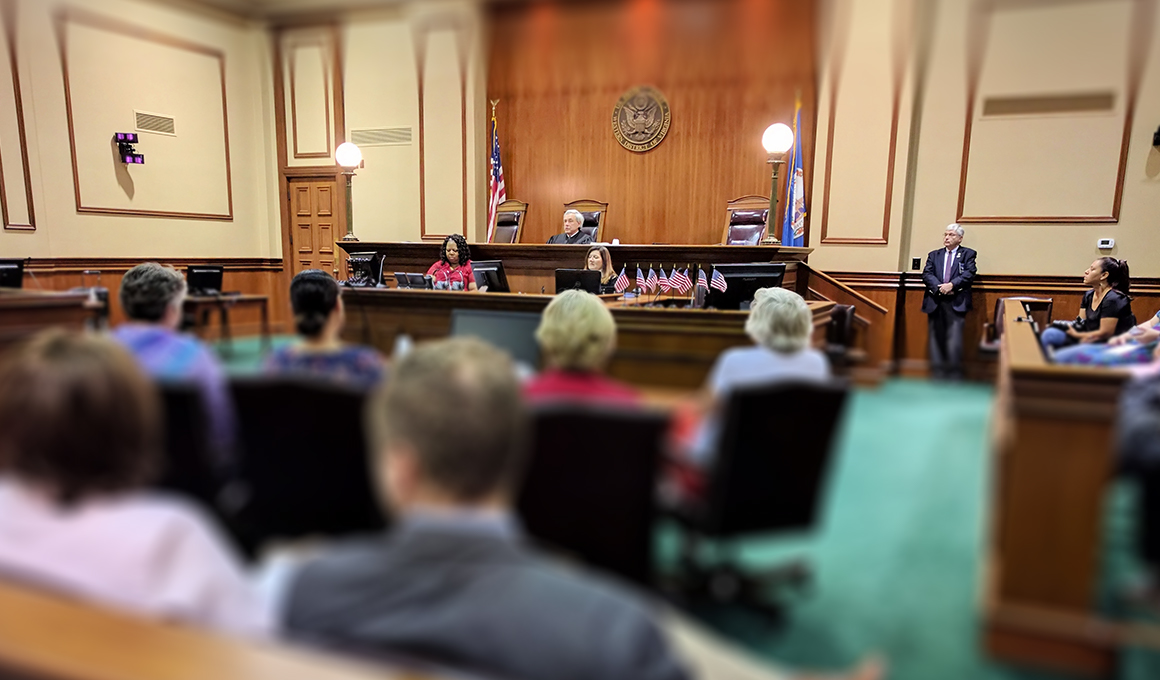Multimedia in trial presentations help simplify legal arguments.
Multimedia in trial presentations help simplify legal arguments.
Blog Article
Exactly How Trial Presentations Enhance Your Argument and Convince Jurors
Test discussions serve as a critical system for boosting legal arguments and convincing jurors. The strategic use of visuals not only clarifies complicated details however likewise captures jurors' attention extra efficiently than words alone.

Importance of Aesthetic Aids
Aesthetic aids play an important function in improving the effectiveness of trial presentations, as they can dramatically boost audience engagement and retention of info. In the context of a test, where jurors are tasked with handling complex info, visual help offer to simplify and clarify key points. Charts, graphs, and photos can communicate data and ideas that might otherwise overwhelm or confuse jurors, enabling an extra simple understanding of the proof provided.
Furthermore, aesthetic aids assist in maintaining juror interest throughout the procedures. By damaging the monotony of verbal statement, these tools can punctuate crucial debates, making them extra remarkable. Efficient aesthetic aids can likewise evoke emotional feedbacks, which can be crucial in persuading jurors to line up with the speaker's story.

Crafting Engaging Narratives
A compelling story is important in test presentations, as it serves as the backbone of effective persuasion. It allows lawyers to weave with each other truths, proof, and psychological elements into a systematic story that reverberates with jurors. This narrative structure makes it possible for jurors to understand the complexities of the case while leading them with the lawyer's debate.
To craft an engaging story, attorneys need to focus on clearness and comprehensibility. This entails establishing a clear lead character-- typically the client-- and detailing their trip through the occasions in concern. Presenting the truths in a rational sequence improves understanding and keeps engagement. Additionally, the usage of brilliant descriptions can produce psychological images that help jurors picture the events, making the story much more memorable.
In addition, incorporating essential themes throughout the presentation strengthens the core message and aids in retention - trial presentations. The narrative ought to not only share info yet additionally stimulate a sense of justice, highlighting the risks entailed. Inevitably, a sound narrative fosters explanation a connection between the jurors and the situation, positioning the attorney's argument as both qualified and engaging, thereby enhancing the chance of a beneficial decision

Involving the Court Emotionally
Reliable court involvement pivots on the attorney's ability to attach with jurors on a psychological level. This link can significantly influence jurors' perceptions and their supreme decision-making. Making use of psychological charms allows attorneys to humanize the case, transforming abstract legal ideas into relatable experiences. By presenting real-life stories or testimonials, lawyers can evoke empathy and concern, fostering a deeper understanding of the problems at stake.
Visual help, such as photos or video clips, can better improve psychological interaction, providing jurors with vivid depictions of the case's human aspects. Crafting a narrative that highlights the struggles and victories of the people involved makes sure that jurors see beyond the lawful disagreements and recognize the human repercussions of their decisions.
In addition, tone and body language play an important duty in conveying emotion. A lawyer's enthusiastic delivery can reverberate with find more information jurors, enhancing their psychological financial investment in the situation. It's necessary to balance psychological allures with valid evidence, guaranteeing that jurors feel forced to act while continuing to be grounded in the truth. Ultimately, a mentally engaged court is most likely to be encouraged, making psychological connection a vital part of efficient trial discussions.
Structuring Your Presentation

The body of the presentation should be logically segmented right into essential points, each supported by compelling proof. It is advantageous to make use of narration methods to weave facts into a narrative that jurors can conveniently comply with. Aesthetic help, such as graphes and video clips, can enhance comprehension and engagement, helping to highlight essential items of proof.
Real-World Instance Research Studies
Taking a look at real-world instance studies supplies indispensable understandings into the art of test presentations and persuasion. The site situation of "O.J. Simpson v. Individuals of California" illustrates exactly how my sources visual aids and engaging stories can persuade jury understandings. The protection group efficiently utilized an approach that combined prominent professional testaments with multimedia discussions, which mesmerized jurors and eventually influenced their decision.
One more significant instance is the "McDonald's Coffee Case," where the complainant's attorneys utilized visuals pictures of the injuries received by Stella Liebeck. trial presentations. This stark visual evidence played a critical function in communicating the severity of her burns, bring about a substantial court honor. Such instances show that impactful test discussions commonly pivot on the reliable assimilation of visuals and narration to evoke psychological reactions from jurors
Moreover, the "Casey Anthony Test" highlighted the importance of narrative coherence and reputation. The prosecution's failure to establish a compelling timeline decreased their persuasive power, emphasizing the need of a well-structured discussion. Assessing these cases reveals that effective test discussions require critical planning, emotional engagement, and the capability to reverberate with jurors' worths and ideas.
Conclusion
Trial discussions dramatically improve disagreements and persuade jurors via the calculated usage of aesthetic help, engaging stories, and emotional engagement. A well-structured discussion equilibriums psychological charms with accurate proof, eventually resonating with jurors' values.
Report this page